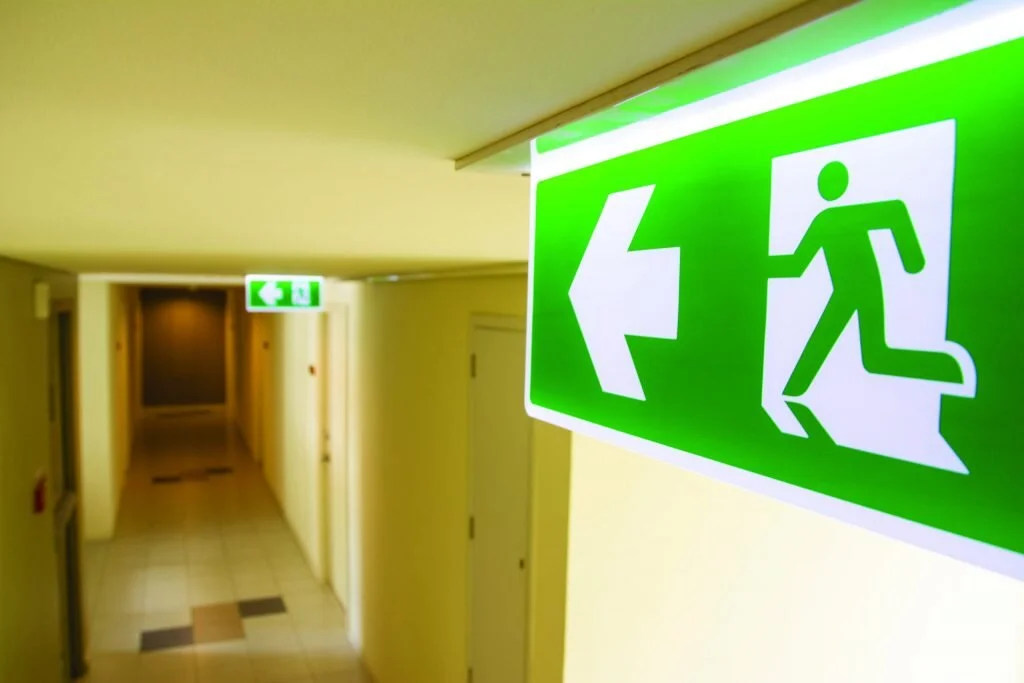Emergency routes and exits requiring illumination must be provided with emergency lighting of adequate intensity in case lighting fails. It is the responsibility of all employers to ensure that all these systems are suitably maintained and checked to ensure they are safe and compliant. All emergency lighting systems should now be installed, tested and inspected in accordance with I.S 3217:2013
During the initial visit, all ancillaries will be identified, labeled and dated.
Every circuit supplying an emergency light is isolated to demonstrate that the internal batteries in the emergency fitting keep the exits and exit routes illuminated during power failures. We will advise maintenance on any lighting units that fail to illuminate clearly or brightly, have blackened bulbs or tubes etc. or do not maintain luminance for the required length of time.
Every 12 months a full discharge test (1hr or 3hr, dependent on system installed) must be performed by a competent person to ensure the batteries are capable of lasting for the required period.
During the initial visit, all ancillaries will be identified, labeled and dated.
Every circuit supplying an emergency light is isolated to demonstrate that the internal batteries in the emergency fitting keep the exits and exit routes illuminated during power failures. We will advise maintenance on any lighting units that fail to illuminate clearly or brightly, have blackened bulbs or tubes etc. or do not maintain luminance for the required length of time.
Every 12 months a full discharge test (1hr or 3hr, dependent on system installed) must be performed by a competent person to ensure the batteries are capable of lasting for the required period.

